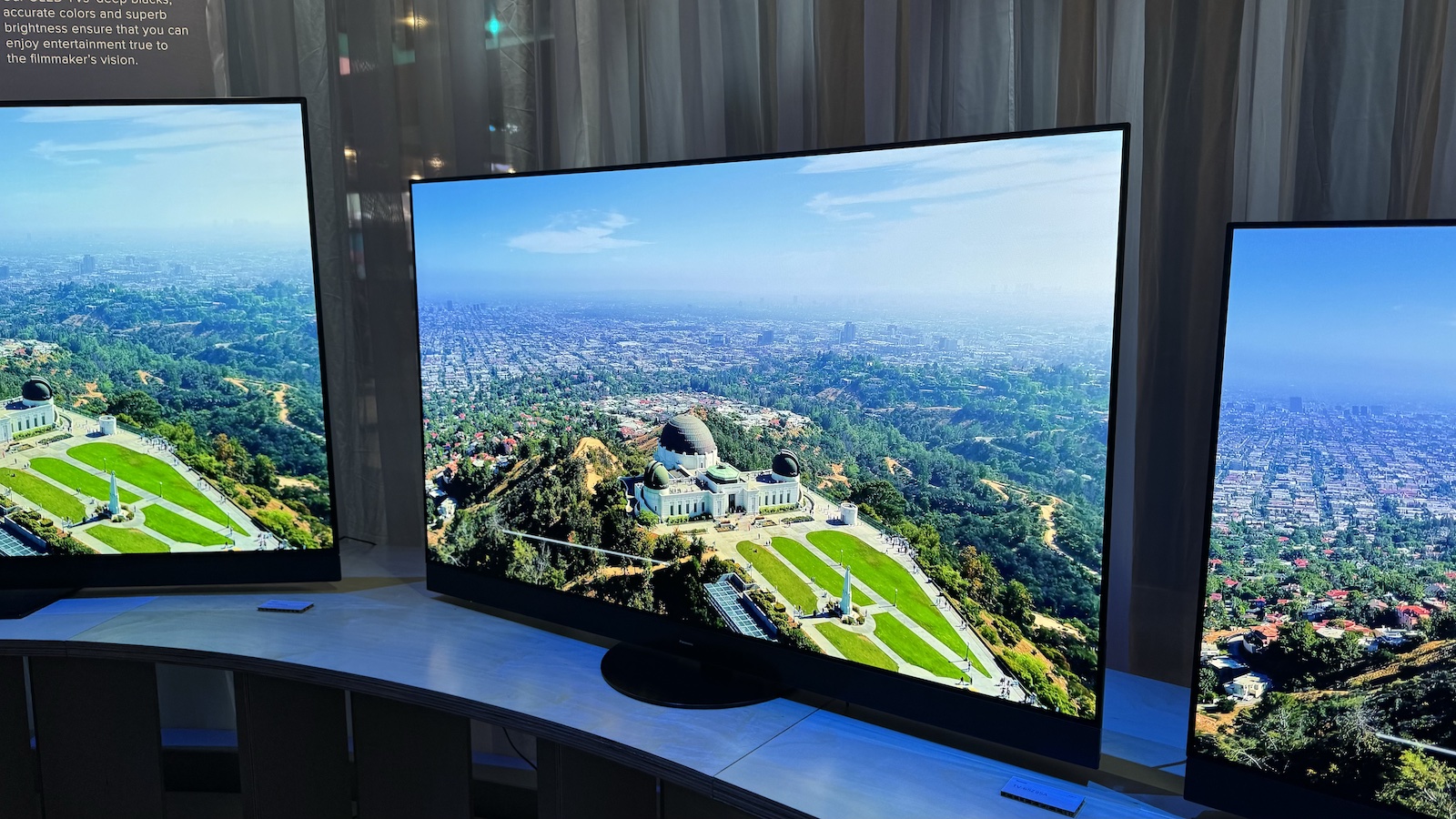
I recently wrote a vaguely ranting piece about how it’s a bit frustrating that every TV has to have a tuner, speakers and smart platform that many of us will never use. Last week’s Panasonic launch reminded me of a related bugbear – the fact that a brand’s most advanced picture quality is usually tied to a fancy sound system and/or design.
Panasonic is far from the only example of this, but it is the most obvious one to my mind, and not just because it’s the most recent. As it did last year, for 2024 the brand is offering just one model with cutting-edge MLA OLED technology, and that model – the Z95A – also features a really chunky and visually obvious Dolby Atmos system.
We haven’t yet fully tested the Z95A but, based on our experiences with previous models that have had very similar audio systems, I imagine it will sound very good by general TV standards. It’s very unlikely, though, that it will sound as good as a mid-range soundbar such as the Sonos Arc. In fact, I’ve never heard a TV that sounds as good as a Sonos Arc.
My hope is that anyone who cares about picture quality enough to fork out for an MLA OLED TV also cares enough about sound quality to partner it with a mid-range soundbar at the very least. Preferably, it will be partnered with an AV amplifier and Dolby Atmos speaker system, though I do realise that space and clutter become issues with such setups for many people.
Regardless of which external sound system someone chooses, assuming they do choose one, the person who buys the Z95A will then have paid for two fancy sound systems, one of which may never be used and yet has to be looked at every day because it’s attached to the TV’s screen. Their TV will also be fatter and heavier than cheaper models because it’s carrying all of those unnecessary speakers.
I know that it appears as if I’m picking on Panasonic, but many other manufacturers do the same or similar. For example, while Philips offers a step-down OLED with MLA tech (the OLED909), it also still has a Bowers & Wilkins sound system that undoubtedly adds to the price.
In the case of LG, flagship MLA technology isn’t locked to a particularly fancy or in-your-face speaker system, but it is locked to the G4’s fancy, wall-mount-focused design – though LG is, in fairness, broadening the G4’s appeal with a bundled stand, which its predecessors didn’t have.
Samsung and Sony’s top TVs in terms of QD-OLED picture performance have sound systems that are invisible from the front, but said sound systems are the most advanced that the respective brands produce, presumably adding a fair chunk to the price.
I have a feeling that this is just one of those things that will never change. TV brands logically assume that the buyer who wants the best picture quality also wants the best sound quality. It’s logical because it’s true; the problem is that a TV is never going to provide the best sound quality. For that, you need a dedicated sound system.
So I would argue that, in actual fact, the buyer who wants the best picture quality has very little interest in how the TV’s own speakers sound. It would be lovely if manufacturers could realise that and start producing models with flagship picture quality and basic – or no – sound.
MORE:
My ideal TV has no tuner, no speakers and no smart platform
These are the best TVs you can buy right now
And here are the best soundbars







